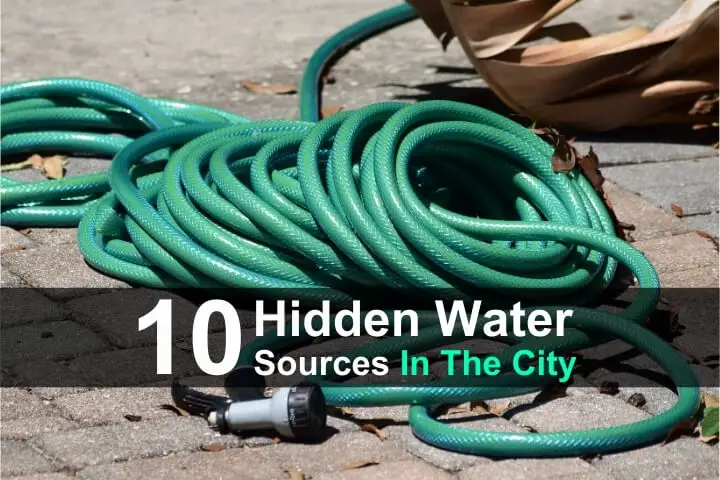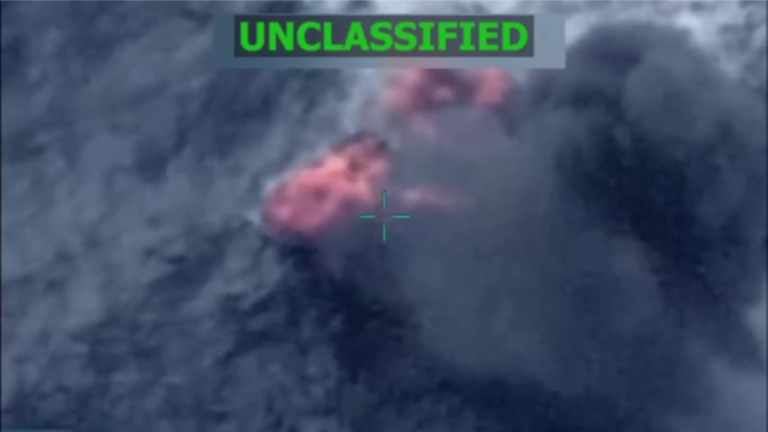Ever stop and really think about what would happen if the taps stopped working? Not just a boil notice or a busted pipe. I mean no water at all. Maybe it’s because of an EMP or a natural disaster or some other event that takes out the grid. The water towers aren’t refilled, and eventually every faucet in the city goes dry. That’s a bad day, especially for the millions of people who don’t have a single gallon of water stored.
Obviously, you should have a water stockpile. But unfortunately, most people don’t. And even if you do, it won’t last forever. So I started thinking: if I were stuck in a city after the water stopped flowing, where could I find water? Turns out, there are more options than you’d think if you know where to look.
Below you’ll find 10 hidden water sources in the city. None of them are perfect, and you’ll definitely want to purify the water before drinking it. But in a survival situation, any one of these could buy you a few more days or possibly save your life.
Want to save this post for later? Click Here to Pin It On Pinterest!
1. Toilet Water
It might sound gross at first, but the water in the back tank of a toilet (not the bowl) is actually clean. It comes from the same water line as your sink and is usually safe to drink in an emergency, especially if the toilet hasn’t been treated with cleaning tablets or chemicals recently.
Just lift the lid off the tank and take a look. If the water looks clear and doesn’t smell like chemicals, you can use it. Of course, to be safe, you should still filter and purify it before drinking. It’s not a long-term solution, but in a pinch, every gallon counts.
2. Canned Food
It’s easy to forget, but a lot of canned foods come packed in water. Canned fruits and vegetables, especially things like peaches, pears, pineapple, green beans, and corn, are often stored in water or juice. While you’re eating the food, don’t just dump the liquid down the drain. Drain it into a clean container and save it.
You won’t get a ton of water from each can, but if you’ve got a decent stockpile, it can add up quickly. Plus, the water from canned fruits has sugar and electrolytes that can help with energy and hydration. Just be careful with things like soup bases or salty broth. The sodium could actually increase thirst.
3. Water Heater
Your home’s water heater is basically a giant metal can full of drinkable water, usually 30 to 50 gallons. As long as it hasn’t been contaminated, that water is perfectly safe to drink. The key is to shut off the power or gas first to avoid damaging the heater once it’s empty.
To drain it, locate the spigot at the bottom of the tank. You may need a screwdriver or wrench to open it. Attach a garden hose if you have one, or just drain it into a container. You might need to open a hot water faucet in the house to let air in and allow the water to flow freely. Just be patient as it can take a little while to get it all out. Learn more in this post.
4. Swimming Pools and Hot Tubs
If you have a swimming pool, that is a huge source of water. And if not, there’s a good chance you can find one nearby, especially if you live in the suburbs. (Just make sure no one is home before you raid their swimming pool. You don’t want to get shot!)
Pools and hot tubs can hold thousands of gallons of water. But here’s the catch: do not drink pool water without purifying it first. It’s usually full of chlorine, algaecides, and other chemicals that can make you sick if consumed in large amounts.
To make it drinkable, you’ll need to let it sit uncovered (to allow chlorine to evaporate), then filter and disinfect it thoroughly. Even if you don’t use it for drinking, pool water is still great for washing, cleaning, or flushing toilets. Learn more in this post.
5. Rainwater
If the skies open up after the taps go dry, you’d better be ready to catch it. Even if you don’t have a fancy rainwater harvesting system, you can still collect a surprising amount of water with just a little improvisation.
Start by placing buckets, pots, or storage bins under your home’s downspouts. Rainwater running off the roof can fill containers fast. If you don’t have gutters, set out any large, clean surface: trash can lids, plastic totes, even a tarp stretched between two points will work.
Just be sure to filter and purify whatever you collect before drinking it, especially if it’s come into contact with roofing materials or debris.
6. Fire Hydrant
Fire hydrants are directly connected to the city’s water mains, and in some emergencies, they may still have water pressure even when the taps are dry. But getting water out of a hydrant isn’t as simple as turning a knob. You’ll need a special hydrant wrench to remove the side cap and open the valve on top.
If you manage to open one, let the water run for a minute or two. It may come out rusty or dirty at first, especially if the hydrant hasn’t been used in a while. Once it clears up, you can fill containers, but don’t skip purification. Hydrant water can still carry contaminants from the pipes or standing water in the system.
Only use this method if you’re confident you know what you’re doing, and keep in mind that tampering with hydrants might be illegal in your area.
7. Lakes and Streams
If you live near a natural water source like a lake, pond, or stream, you’re lucky. It won’t be clean, and you’ll absolutely need to purify it, but it’s still water, and that puts you ahead of most people in the city.
The challenge is hauling it back to your home. Large jugs, 5-gallon buckets, or even empty storage totes can work in a pinch. A backpack with a hydration bladder or collapsible water containers is ideal if you have to travel on foot. If you have a wagon, cart, or even a bike with a trailer, use it.
8. Toilet Tanks in Public Restrooms
Most people wouldn’t even think to check, but the toilet tanks in public restrooms can be another source of clean water. Just like at home, the water in the tank (not the bowl) is usually clean and comes straight from the main water line.
These tanks are often untouched and hold a couple gallons each. If you’re in a large building, you might find dozens of tanks you can quietly tap. Bring a container, check for cleaning tablets or signs of contamination, and if it looks clear, collect what you can. As always, purify before drinking.
9. Commercial Ice Machines and Soda Fountains
Restaurants, gas stations, cafeterias, and fast food joints all have ice machines and soda fountains, and these machines have internal reservoirs that are connected to water lines. This means they may still hold usable water.
Start with the ice machine. If it still has unmelted ice, grab as much as you can and let it melt in a clean container. For soda fountains, you might be able to access the water line or drain some of the plain water used for mixing drinks.
Be cautious, though. These machines aren’t designed for easy access, and the water inside could be stale or unclean. Use it for drinking only after proper filtration and purification.
10. Radiators and Heating Systems (Older Buildings)
Old-school radiator heating systems like the kind you still find in older apartments, schools, and government buildings can hold a surprising amount of water. These closed-loop systems circulate water through metal pipes and radiators to provide heat, and depending on the size of the building, they can contain dozens of gallons.
To access the water, look for a valve at the top of the radiator. You may need a radiator key or small wrench to open it. Keep in mind, this water isn’t meant for drinking and may contain rust, sediment, or even antifreeze additives in some cases. But if you’re in a desperate situation, you can filter and purify it, or you could use it for hygiene and flushing toilets. It’s not ideal, but when you’re out of options, it’s better than nothing.
Bonus: Garden Hoses / Sprinkler Systems
I almost didn’t include this because you’d probably only get a few liters of water at most, but in a survival scenario, every drop counts. Garden hoses and underground sprinkler systems often hold stagnant water inside the pipes, especially if they haven’t been used in a while. It’s not much, but it could be enough to drink, cook, or clean with in a pinch.
To get it, disconnect the hose from the spigot and lift it from one end to force the water out. For sprinkler systems, you may be able to open a valve or unscrew a head to let water drain out. Be aware: this water is definitely not clean and may contain bacteria, lawn chemicals, or algae. You’ll need to filter and disinfect it thoroughly before drinking.
Like this post? Don’t Forget to Pin It On Pinterest!
You May Also Like:
Read the full article here














